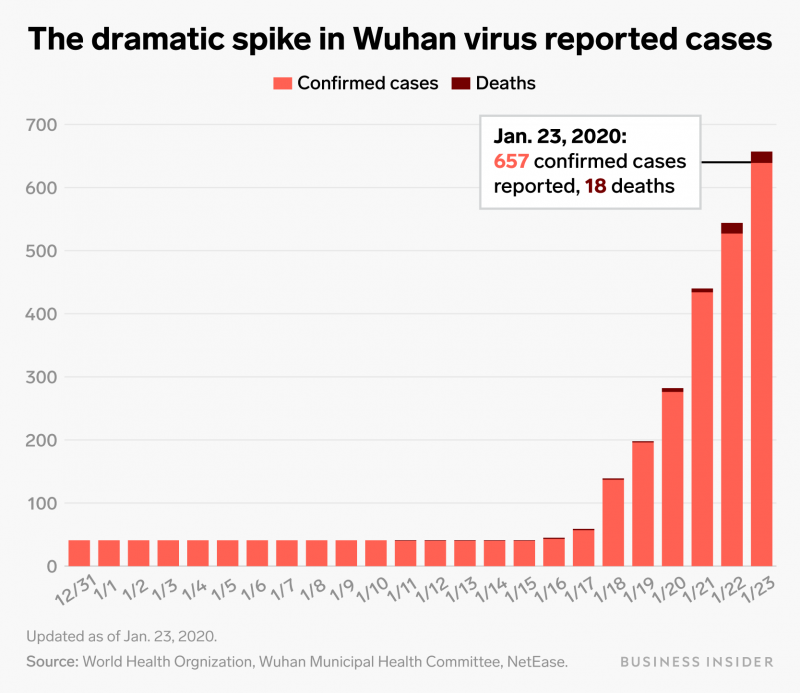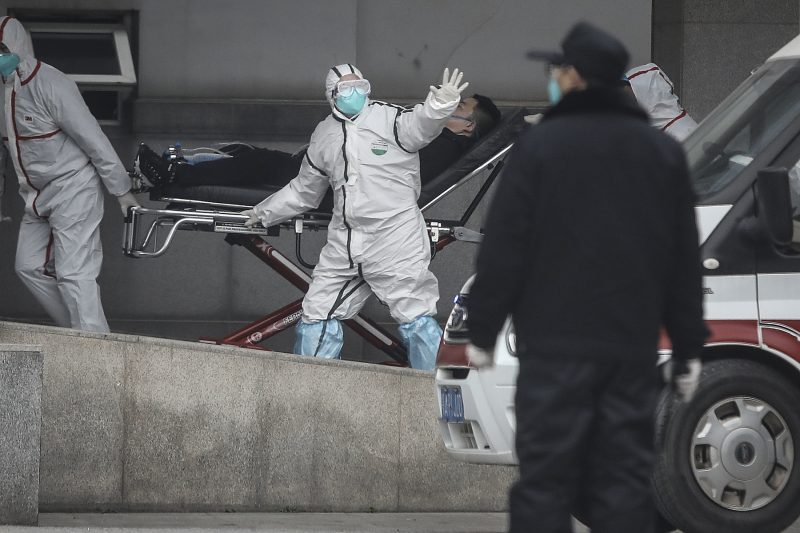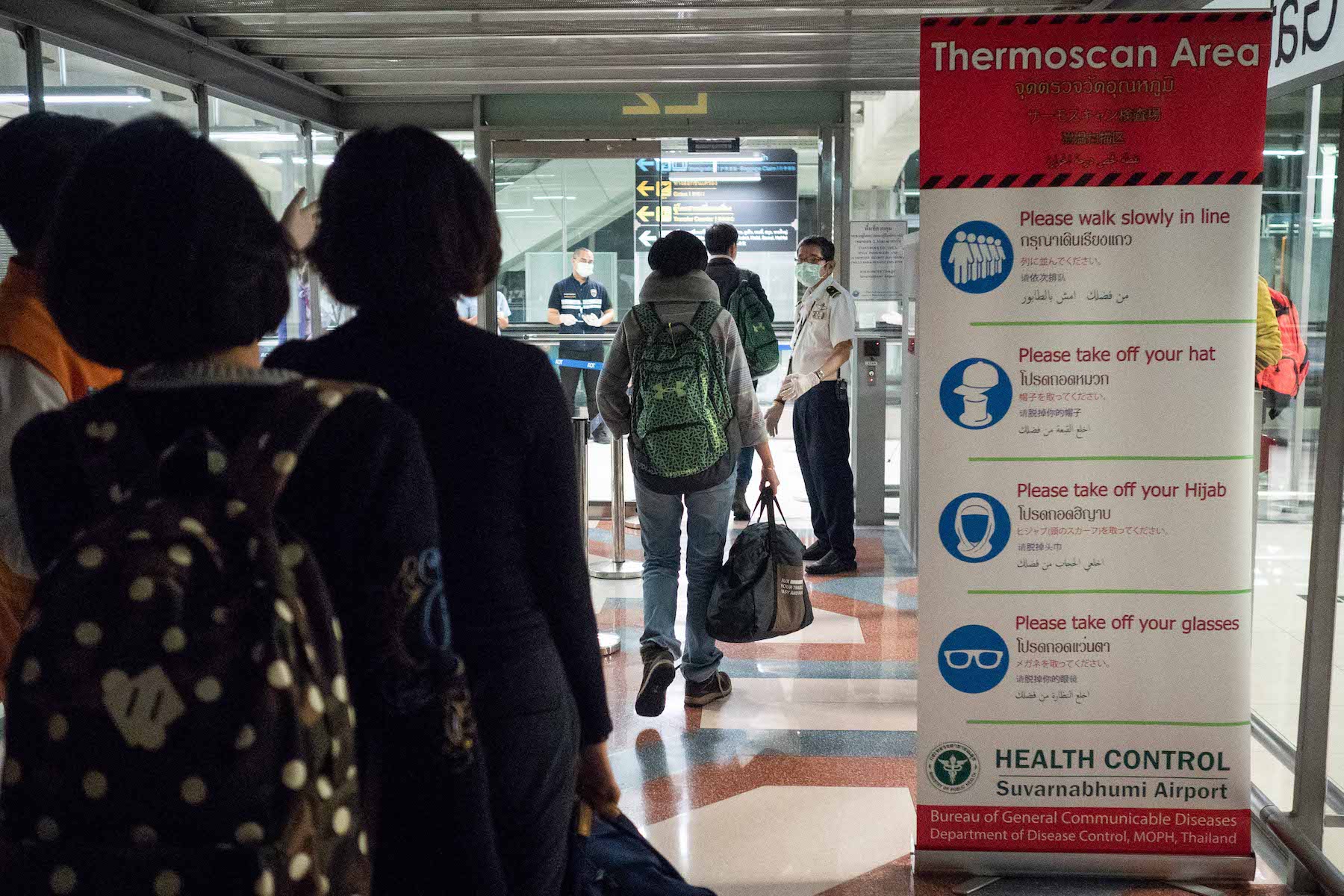- A mysterious coronavirus has killed 18 people and infected more than 630 people in China.
- Authorities have confirmed that the virus can spread from human to human. Cases have been reported in at least seven countries outside China.
- Here’s how the virus has spread so far.
- Visit Business Insider’s homepage for more stories.
The outbreak started small: On December 31, Chinese authorities reported that 41 people in Wuhan, the most populous city in central China, had caught a mysterious, pneumonia-like virus.
For a time, the outbreak seemed relatively contained. Authorities did not report any new cases for several days.
But on January 11, Chinese officials confirmed the first death: a 61-year-old man who was a regular shopper at the local seafood market where the outbreak is believed to have originated.
The wet market sells live and dead animals, and putting them in close proximity to people can raise the risk of a disease outbreak. At first, officials thought this coronavirus could only spread to people from animals. But authorities have since determined that humans can transmit it to one other. In the last week, confirmed cases of the Wuhan virus have risen dramatically – from around 45 cases on January 16 to more than 630 cases on January 23.
The virus has killed 18 people.
Here's how much it has spread since the start of the outbreak:

An animation shows how sharp the recent spike in deaths and illnesses has been:
Milder but more transmissible than SARS?
The coronavirus family is a large group of viruses that typically affect the respiratory tract. They can lead to illnesses like the common cold, pneumonia, and severe acute respiratory syndrome (SARS), a fatal illness that hasn't been reported anywhere since 2004.
A viral outbreak of SARS that started in China in November 2002 resulted in 8,000 cases and 774 deaths. The outbreak spread to dozens of countries in North America, South America, Europe, and Asia. Recent research suggests that horseshoe bats may have been the original hosts of the virus.
"An initial first impression is that this is significantly milder than SARS," Eric Toner, a scientist at the Johns Hopkins Center for Health Security, told Business Insider. "On the other hand, it may be more transmissible than SARS."

Amplifying the risk that the disease could spread further is the coming Chinese Lunar New Year celebration, which starts this weekend and lasts until February 8. The holiday leads hundreds of millions of people to travel; it's one of the world's largest annual human migrations.
"This couldn't have happened at a worse time for Wuhan," Adrian Hyzler, the chief medical officer at Healix International, which offers risk-management solutions for global travelers, told Business Insider. "Travel spreads this kind of virus like wildfire."
On Wednesday, Wuhan officials announced that they are effectively quarantining the city by shutting down all transportation. The director-general of the World Health Organization, Tedros Adhanom Ghebreyesus, said the move could "minimize the chances of this outbreak spreading internationally."
Beijing has also canceled its New Year celebrations.
However, the virus has already spread to at least seven other countries, including the US, where a man in his 30s was confirmed sick on Tuesday.

"This is what everyone fears - that you'd get human to human transmission," Hyzler said. "One person who has been infected can suddenly infect 10, 20, 30 people."
One of his main concerns, Hyzler added, is that scientists still haven't determined the virus' incubation period - the time that passes between when a patient gets infected and when they start displaying symptoms. During that period, people can be contagious without realizing they're sick.
"With SARS, people were only contagious when they were very, very sick, which is why it spread mostly in hospitals," Toner said. "What we don't yet know is to what extent this disease can be transmitted by people who are only mildly ill. That's one of the things that we're trying to figure out."
- Read more about the Wuhan coronavirus:
- The deadly Wuhan coronavirus has spread to the US - authorities have confirmed a case in Washington state
- When you should be worried about the Wuhan coronavirus, which has killed at least 17 people
- 17 people are now dead from the mysterious Wuhan coronavirus. Here's everything we know about the disease spreading across China and beyond.
- China banned live animal sales in Wuhan, after a food market selling wolves and civet cats was linked to a deadly virus

